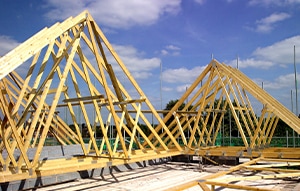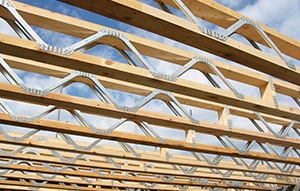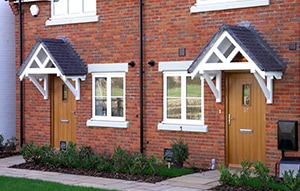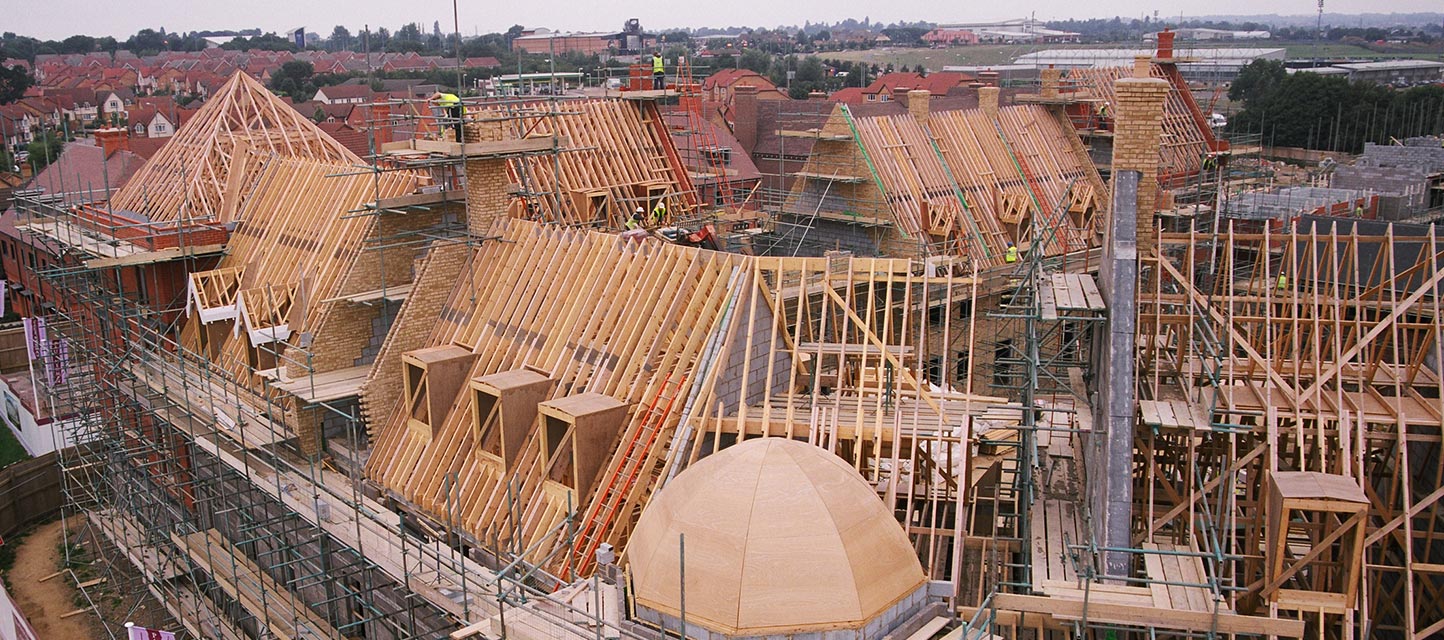The benefits of timber construction for UK housebuilders:
Interview with David Hopkins, CEO of Timber Development UK
How can housebuilders work more effectively with timber suppliers? What initiatives are underway to address housebuilders’ and insurers’ fire safety concerns?
Our technical timber sales manager, Tom Hiles, gets the answers to these questions and more from David Hopkins, CEO of TDUK, in our latest interview.
Watch the full video at: https://youtu.be/keHbuortZfI
When did Timber Development UK launch, and why?
We formed TDUK towards the end of 2022 following the merger of the Timber Trade Federation and Timber Research and Development Association (TRADA).
We put them together for a number of reasons, which included the fact timber is a big player in the construction materials industry, but the industry always seemed to be very fragmented. We wanted to put together one entire supply chain organisation that supported everyone from sawmill and importer, all the way through to specifiers and builders.
How can housebuilders work effectively with timber businesses in the supply chain?
TDUK now has services specifically for timber agents and importers, distributors, merchants, manufacturers, housebuilders, contractors, architects and engineers.
While we provide services for each of those vertical markets, it all comes together in benefits for housebuilders, as they’re one of the biggest users of timber and the biggest drivers for that supply chain. We can now say: “All of the things you need for your timber journey, all of the information you need, and all of the companies, suppliers and others that you need for your journey with timber housing, supply and components, it’s all in TDUK. We represent all of them.”
How about architects and engineers?
Actually, the number of architects and engineers and designers within TDUK’s membership now far outweighs the timber companies. So we’ve got about 350 timber suppliers and manufacturers in membership and over 1,200 architects, engineers and designers. They want to know their supply chain and what products you have and how to use them. We’ve got to keep feeding them the technical information they need and provide them with up-to-date knowledge on what’s available.
We want to make sure there’s good peer-to-peer knowledge-sharing. We run a whole range of webinars and other events, which involves architects talking about buildings they’ve designed. We put engineers in there as well to talk about how they’ve worked together to create these buildings. All of this insight acts as a good knowledge-sharing platform for all TDUK members.
Why should we be using more timber within our homes and construction in general?
Most housebuilders recognise that they’ve got to meet their carbon targets and there’s a variety of ways they can do that, including using more timber. I think they’re also realising that they need to attract finance into their own businesses and they need to meet a whole range of ESG criteria. Timber helps them meet not just the carbon, but other aspects of that environmental, social and governance criteria too.
There’s also the wider recognition of the health, wellbeing and natural aesthetics of timber. Housebuilders and their customers are cottoning on to the benefit of having natural products in their homes and lives. There’s an emotional connection between people and natural products.
There is now a body of evidence about using timber in construction, design and interiors, and the health and wellbeing benefits. There is also scientific evidence into its impact on air quality, and all of the other benefits of using natural wood products in buildings. It’s becoming a growing body of evidence, and there’s a growing thrust among housebuilders and homeowners towards that trend.
The low carbon agenda is certainly a huge driver and it’s one we always push. But all of these other factors are coming into play. And the one that we always come back to is the fact there is a link paradoxically with using more timber and growing forests, so helping to tackle the impact of climate change overall.
How can housebuilders gain competitive advantage by using more wood?
Some of the bigger contractors already are. There’s one company that does a lot of work in mass timber and has really made a name for themselves. They were a steel fabricator and contractor and realised they could do what they do in part timber and part steel, which enabled them to achieve a good competitive advantage.
You can also go to a builders’ merchant and see they’re selling PVC extensions. There could also be timber versions; there’s got to be a company out there that could steal a march on that idea.
At Scotts, the carports we sell to national housebuilders are glulam and incredibly easy to install. We send them to subcontractors with an installation method statement and, because of the ease of using the timber, housebuilders can save money on additional installation teams whilst ensuring they have continuity on site. We provide the connectors and beams and they all slot together. It’s such a tidy package. The glulam itself is such a versatile material to work with; we’ve had fantastic results.
What initiatives are underway to address housebuilders’ and insurers’ concerns about fire safety?
We’re doing a number of things at TDUK. We are launching a new website, Fire Hub, which is a collaboration between TDUK, Swedish Wood, the STA and others. It’s a peer-reviewed live website that’s free for designers, housebuilders any others to use.
It will have all the information you need on fire design, safety and construction and mitigating risks during the construction process.
Alongside that, there’s also a robust programme of fire testing. The STA are doing a great job on leading on a lot of those concerns, as are the Trussed Rafter Association and others to make sure we’ve got all the appropriate up-to-date test data and are sharing it.
Housebuilders and the insurance sector have got to understand there are different risks according to different building types. We need to start using the correct terminology for the buildings and products and styles of building that we’re making, and not just call everything a timber building or a timber frame.
There’s a big difference between a timber frame two-storey, three bedroom house that is rolled out all the time by volume housebuilders, and a one-off, eight-storey building in the centre of the city made out of CLT. The difference in risk profile is greater than the difference in height of those buildings.
People have to understand that and not put all timber products into the same category, because the risk is enormously different.
There’s a new book called the Insurance Playbook coming out for the insurance industry this year, led primarily by a group called Built by Nature, which will address these issues.
What are the next 12 months going to be like for TDUK?
We need to promote, educate, train and inspire so that when the new homes market does come back strongly, we want people to be buying timber and building and designing their projects with timber.
What I would hope is that we might see some greater initiative on the Government side to promote or stimulate the construction and housebuilding sector. During Covid, the Government really tried to keep construction working, and I think it will happen again.
We just need to do all that we can to minimise the downturn, to keep the promotion going, and be talking to housebuilders, contractors, and others, and really try and come up trumps when the market comes back in a year or 18 months’ time.
View the whole interview here: https://youtu.be/keHbuortZfI
If you would like to speak to one of our team, simply fill out your details below and a member of our sales team will be in touch very soon to discuss your project requirements.
If you would like to speak to one of our team, simply fill out your details below and a member of our sales team will be in touch very soon to discuss your project requirements.
- Copyright © Scotts of Timber 2024
- Privacy Policy




















